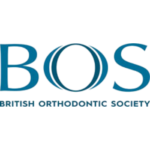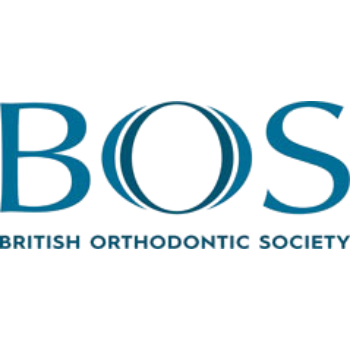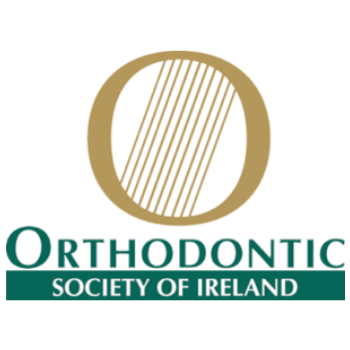Frequently Asked Questions
Answering the Questions you're asking
What Is Orthodontics?
Orthodontics literally means ‘straight teeth’
Very simply, orthodontic treatment is done by applying gentle forces to teeth and jaws in a very controlled way to improve the alignment and appearance of a patient’s teeth. There are many types of appliances that can be used and there is often a choice of treatments that may be suitable for any given problem. To achieve the best results the orthodontic process should not be rushed, and should be done with several visits and a slowly but surely approach.
The principle goal of orthodontic treatment is to improve the appearance of a patient’s teeth to create a smile you love.
Do I need a Brace?
An attractive smile can bring life-long benefits in terms of self-confidence, socialising and even career opportunities.
In addition to the cosmetic/social advantages of having a beautiful smile, well-aligned teeth are easier to clean. Patients who have had orthodontic treatment will gain long term health benefits by maintaining better dental hygiene.
After extensive scientific research and many technological advances, orthodontic treatment is easier than ever. Treatments are now shorter, more comfortable, and require fewer visits. Orthodontics is now a realistic option for anyone regardless of age or previous dental care.
What will happen on my First Visit?
Your smile is our priority and we promise to provide all treatments in a safe and friendly environment for an enjoyable experience in our professional hands. We are passionate about achieving high clinical standards which centre around you. As a prospective patient, we want you to be fully involved in the decision-making process and will share enough information to allow you to make a fully informed decision regarding your orthodontic treatments.
This will include:
- A gentle examination of your teeth with our specialist Orthodontic team
- Photos of your teeth, as well as X-Rays and a Digital Scan of your jaw
- A 3D preview of your future smile
- An overview of all your treatment options and the planned treatment progress
- A detailed quote and overview of what to expect for your next visit.




What Type Of Braces do I Need?
01.
‘TRAIN TRACK’ BRACES – Fixed Appliances
The most common type of treatment is done with fixed appliances, often known as ‘train track’ braces. These are exceptionally reliable and are the best way to align teeth for most patients.
A bracket is glued to each tooth which allows the orthodontist to gently pull or push the teeth around. A very fine wire is tied to the brackets to apply this gentle force. In our practice, we use Damon self-ligating brackets that apply extremely light forces making these treatments very comfortable, a little quicker and require fewer visits than the older generation of brackets. We also use ‘Tip Edge’ brackets that are also low friction and allow treatment of more severe types of bites.
02.
Ceramic White Braces
The big disadvantage of metal ‘train track’ braces is that they can be seen! White (ceramic) brackets can be used for adult clients, but they do have some minor drawbacks. These drawbacks can be overcome with good patient motivation and a couple of extra visits. These brackets can still be seen but are much more discreet.
03.
Clear Aligners
Clear aligners are at the forefront of cosmetic dentistry technology. Unlike traditional braces, clear aligners use a series of custom-made trays to gently straighten teeth.
Throughout the treatment process, each patient is fitted with removable, nearly invisible aligners that are specifically crafted to fit their teeth.
Clear aligner treatment has become an extremely popular option and can now address a wide range of complex cases. Each unique treatment plan is created using a digital scan taken at the patient’s first appointment.
04.
Removable Appliances
Upper removable appliances are the traditional’ spring’ used very commonly before fixed appliances became available. They can treat very simple alignment problems but also have severe limitations. Occasionally we use these appliances for young children with simple problems

How do I Care for My Braces?
- Brush your teeth 3 times every day. Time yourself for 3 minutes and brush every surface of the tooth. Move the brush gently along the gum line using a small circular motion. Brush in and around all the brackets and wire of your braces. Be gentle but thorough. You do not need to scrub hard! Don’t forget to clean the inside surfaces next to the tongue.
- Please use the Interdental brush (smaller brush) after you have brushed with the orthodontic toothbrush. This small brush is excellent at getting between the brackets and into any small spaces.
- When flossing, threat the end nearest the cotton, into the bottom of the tooth on the lower teeth and the top of the tooth in the upper teeth, and gently rub up and down each side of the tooth. Don’t snap it down in between the teeth as you may damage the gum. Work methodically so that each tooth is flossed.
- Please use a fluoride mouthwash last thing at night, every night.
- The disclosing tablets- the disclosing tablets aim to check how well you are brushing your teeth.
Please read the information leaflet before using the disclosing tablets.
- Brush your teeth as normal
Chew the tablet in your mouth but do not swallow it.
Rinse your mouth out with water. - Look in the mirror. Are there any pink areas on your teeth? This is the plaque that has been ‘disclosed’ and shows where you need to clean more.
Brush your teeth again to remove the plaque (pink area).
Wax
The wax is designed to relieve any pain caused by the braces rubbing against the cheeks. If you feel your cheeks are sore, pinch off some wax and soften it between your fingers for a few seconds. Then mould the wax over the part of the brace which is causing the problem.
If any of the products run out of your cleaning pack you should be able to buy them in a chemist or you can buy a new pack at the practice for €10.00.
If you have any problems with regards to your braces or if you have any questions please do not hesitate to contact the practice on (074) 91 29400, Monday to Friday
Will I need to Wear A Retainer?
All Orthodontic patients will need to wear retainers! If you DON’T the teeth could MOVE!
The risk of this movement will get less slowly with time. The position of the teeth will need to be supported while the bone and soft tissue around the teeth remodels to the new position.
If the teeth are not held the teeth will ‘spring’ back a little in the first few weeks. It takes up to 9 months for the bone and gums to fully settle with the teeth in the new position. Even after this time, the teeth will need to be held to prevent movement, but not quite as much. Ever so slowly, the control can be reduced in most patients until the retainers can be thrown away. This could take several years.
Some patients will have to wear retainers forever. For growing patients the retainers should be worn in some form until facial growth has finished. In females, this could be 18 or 19 years old. In males, this could be 20 or 21 years old.
Warning -Teeth move anyway in the late teenage years! For several reasons the teeth often become more crowded in the late teenage years. This happens in orthodontic patients and in untreated cases. One small reason is the appearance of wisdom teeth at about this age. This may add a slight forward pressure leading to crowding.
More importantly, is the tone or activity of the muscles in the lips and face as the face finishes growing. These muscles get stronger at this age and tend to push the teeth slightly further back. This results in an increase in crowding of the front teeth.
Your retainers will help prevent this unwanted tooth movement and will allow this muscular pressure to be applied to the whole arch and avoid the teeth crowding over again.







What Can I eat during my treatment?
Diet is an essential part of maintaining dental and oral health. Prevention is always better than cure so we recommend a daily diet with as little refined sugar as possible.
Refined sugar is commonly consumed through sweets, mineral drinks, chocolates, cakes, biscuits and sugar, which is normally added to cereal or tea/coffee. To avoid dental health concerns, we recommend removing regular consumption of these items.
The infrequent treat with these foods is fine, because the mouth and teeth can recover from genuine 'rare' treats, e.g. birthday cake, easter eggs or ice cream on a hot day etc.
Daily consumption of refined sugar can cause dental decay and the discolouration of the teeth, as well as cause long term damage to your enamel.
Be cautious of 'fruit' in the form of fruit drinks and smoothies and fizzy drinks. Taken in excess the acidity in these drinks can cause enamel loss and erosion of your teeth, which is irreversible and can cause sensitivity and loss of tooth structure. Opt for water, as a healthier option and the occasional intake will cause limited issues, but frequent doses will cause problems.
Sports enthusiasts should limit/avoid the energy drink /isotonic drinks as that are also high in sugar and acid. They don't even work unless you are under extreme conditions, ie endurance events on hot days.
Hard foods may break the fixed appliances and chewing gum can break the wires, so please be careful and bear in mind the strength of your jaws.
With care most types of food can be eaten safely.
What is the cost of orthodontic treatment?
The cost of treatment will depend on the complexity and length of treatment, as well as the severity of the presenting problem. Simple, single-arch treatments could be as little as €1200.
Most treatments require upper and lower dental adjustments, and the average for upper and lower fixed appliances is around €3,500.
Clear aligner treatment is available in Comprehensive, Lite, and Express packages, with the option selected depending on the individual needs of the client. Most comprehensive clear aligner treatments range from €4000 to €4400, but can be lower in certain cases. Lite and Express packages are more affordable and may be suitable for some clients.
Surgical and restorative cases may cost more due to increased complexity and the need for collaboration with other specialists to achieve the best possible results.
Tax relief is available on all treatments, allowing 20% of the treatment fees to be recouped — if eligible.
Family reductions are offered when more than one family member is being treated. Payment plans are available, allowing patients to spread the cost of treatment through monthly automatic instalments.
Request Your
First Appointment
Love Your Smile









